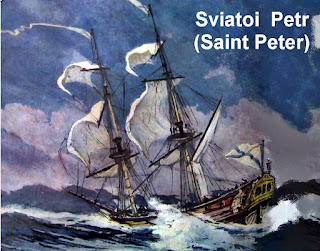Tuesday, April 4, 2023
Discovery of Alaska by Russian explorers
The first Europeans to reach Alaska came from Russia. In 1648 Semyon Dezhnev sailed from the mouth of the Kolyma River through the Arctic Ocean and around the eastern tip of Asia to the Anadyr River.
One legend holds that some of his boats were carried off course and reached Alaska. However, no evidence of settlement survives. Dezhnev's discovery was never forwarded to the central government, leaving open the question of whether or not Siberia was connected to North America.
In 1732, Mikhail Gvozdev in Sviatoi Gavriil (or Saint Gabriel) sailed to Dezhnev Cape, the easternmost point of Asia. From there, after having replenished the water supply on 5 August, 'Sviatoi Gavriil' sailed east and soon came near the American mainland at Cape Prince of Wales, Alaska. They charted the north-western coast of Alaska and mapped their route. By doing this, Gvozdev completed the discovery of the Bering Strait
As a part of the 1733-1743 second Kamchatka expedition, the Sviatoi Petr (or Saint Peter) under the Dane Vitus Bering and the Sviatoi Pavel (or Saint Paul) under the Russian Alexei Chirikov set sail from the Kamchatkan port of Petropavlovsk in June 1741. They were soon separated, but each continued sailing east.
On July 15, Chirikov sighted land, probably the west side of Prince of Wales Island in southeast Alaska. He sent a group of men ashore in a longboat, making them the first Europeans to land on the northwestern coast of North America.
On roughly July 16, Bering and the crew of Sviatoi Petr sighted Mount Saint Elias on the Alaskan mainland. They turned westward toward Russia soon afterward. Meanwhile, Chirikov and the Sviatoi Pavel headed back to Russia in October with news of the land they had found.
In November Bering's ship was wrecked on Bering Island. There Bering fell ill and died, and high winds dashed the Sviatoi Petr to pieces. After the stranded crew wintered on the island, the survivors built a boat from the wreckage and set sail for Russia in August 1742. Bering's crew reached the shore of Kamchatka in 1742, carrying word of the expedition. Out of 77 men aboard Sviatoi Piotr, only 46 survived the hardships of the expedition, which claimed its last victim just one day before coming into home port. The high quality of the sea-otter pelts they brought sparked Russian settlement in Alaska.









